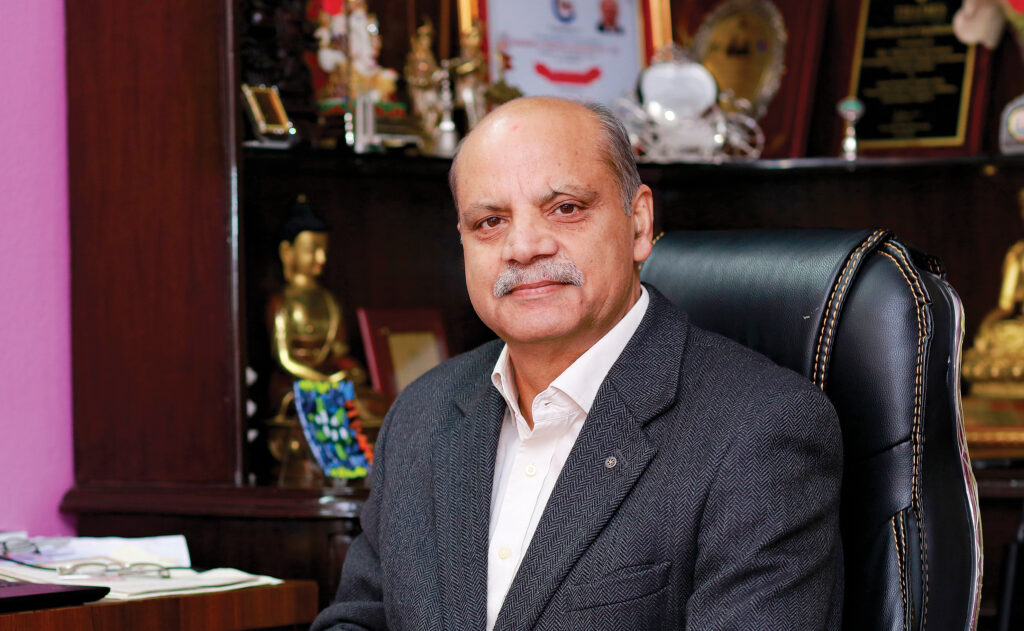 In today’s world full of tough competition, hiring talents and creating an organizational environment that fosters the growth of individuals and organizations has become a big challenge to HR managers. For many HR professionals, it proves hard to find the right strategy for their organizations.
In today’s world full of tough competition, hiring talents and creating an organizational environment that fosters the growth of individuals and organizations has become a big challenge to HR managers. For many HR professionals, it proves hard to find the right strategy for their organizations.
Rohit Manucha is Chief Human Resources Officer (CHRO) at the Dubai-based SIH-AGH. A certified executive coach with core expertise is in organizational transformation and effectiveness, he has over 13 years of experience in aligning organizations with their strategic agenda and managing transformation across 20 countries. In an interview with the HRM, Manucha talks about the right approaches for HR professionals in hiring and building an excellent organizational culture. Excerpts:
What is the one sure-shot way that HR leaders can rely on to realize that they have made the right hiring decision?
Talent is now multi-faceted and trying to hire with the myopic viewpoint of competency, skill alignment or role profile alone would not suffice. You know you have made the right hiring decision when you hire talent with the future outlook of the business and help the talent realize how they can build a career within the organization. The proof of the pudding is when you see that vision coming to life and create a win-win scenario for both the talent and the organization.
What is the tip to remaining competitive among other employers when you’re trying to attract the top talent, and why?
Be honest and keep it simple. Build a culture and organization construct around these 2 principles. Now imagine an organization where from application to onboarding the talent acquisition process feels welcoming to the applicants. It shows them that you value their time and want to see them succeed with a selection and service focus rather than a rejection orientation in your approach to attracting talent.
What is the sure-shot way for HR leaders to encourage team leadership and employee morale?
HR leaders need to realize that the one-size-fits-all approach does not work. They need to focus on developing an organizational culture and construct that recognizes, nurtures, celebrates and hones unique individual facets in a manner that provides for greater empowerment & delegation of authority. This, in turn, will enhance employee morale and encourage team leadership in the early stages of one’s career.
What creative idea leaders can implement in order to help them get to know their employees better?
If you want to get to know someone better observe them in their ‘turf’ where they are most comfortable. Thus, have a:
– classical ‘family-office offsite’, else ‘bring your family/ friend to work day’, Or;
– ‘hobbies day’, wherein the leader accompanies the employee, to the hobby of their choosing. These can be done virtually as well.
What advice do you have for new HR leaders in 2022?
Remember your roots and be humble, curious and honest in all dealings. Make a strategic impact by identifying HR practices that are no longer relevant from a people and business perspective and weed them out. Do not shy away from rolling up your sleeves and getting work done when needed. Develop, trust and empower your team to drive employee experience-centric change across the organization.
What is the way HR leaders can effectively gain insight into employee engagement?
Complement the “point in time” surveys with ‘people acumen’. Be tuned in to the “vibe” of the office by a walk around the factories/ sales floor. Set time aside for ‘catch up’ sessions with employees across the hierarchy, at their workspace. Listen to what they ‘feel’ and ‘believe in’ to make the organization a better place to work in. Implement it and give them the credit for the benefits arising from it
What is one important yet often overlooked topic HR leaders should implement for their employee training programs to prevent a big issue down the road?
The current training set up across organizations is built with a major flaw. Training needs assessment (TNA) is often done by line managers who at times are threatened by competent reportees, as they may not have a defined career path for themselves. Hence, rather than honing talent with customized training programs, reportees are often sent into ‘run of the mill’ training programs that do not add value. Hence complement the TNA with skills assessment at a nomination stage itself and weed out irrelevant training requests.
What initiative HR leaders can implement at their organization in order to help employees adapt to new technologies?
For any change initiative to be successful one needs to ensure maximum adoption in the shortest timeframe. Thus, the simplest way to do this is to ensure the ‘what is in it for me’ is clear to the employees. During pre-launch adequate ‘user experience’ focused communication & training should be provided. At launch technical and behavioral support infrastructure and post-launch, a helpdesk is provided.



